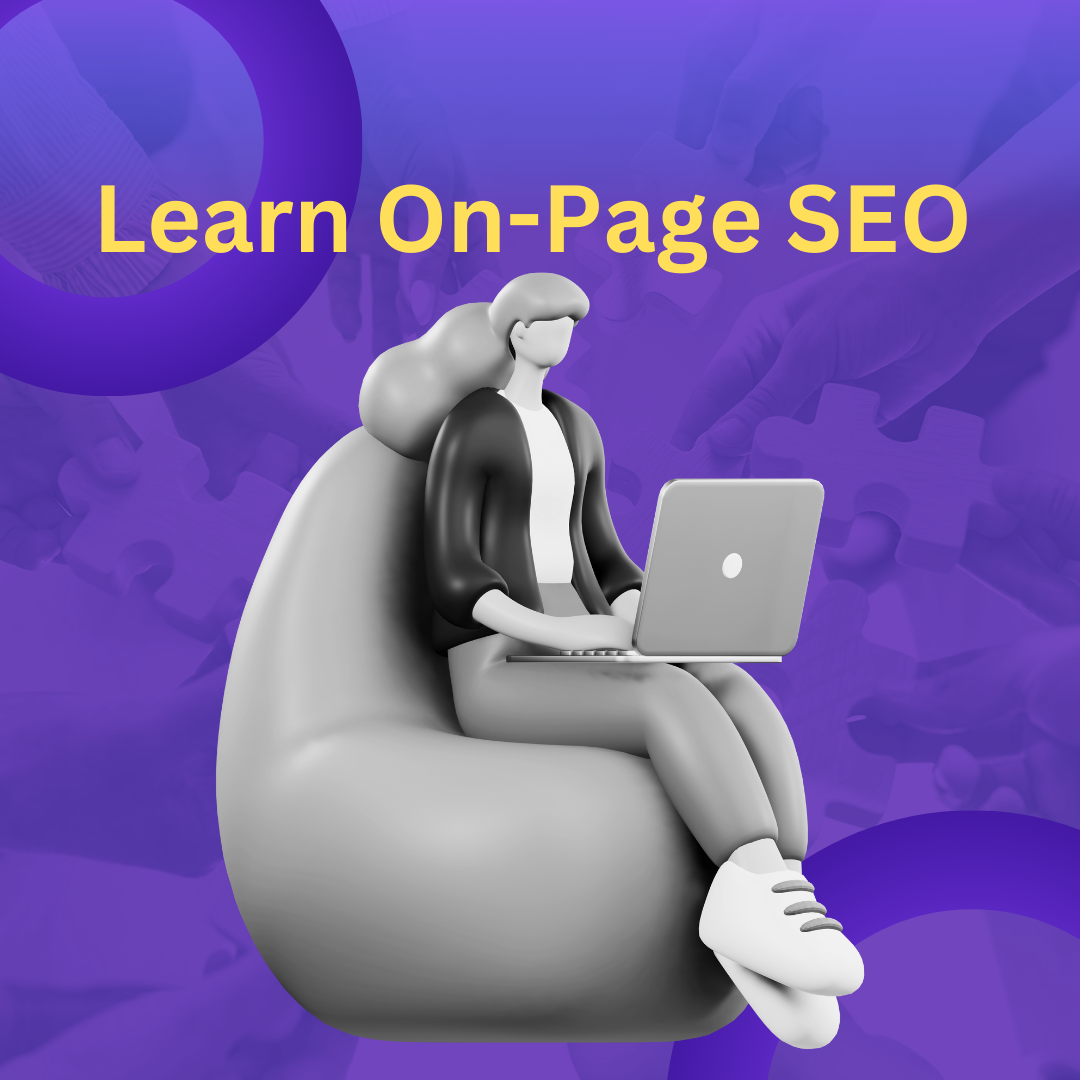Comprehensive Guide to On-Page SEO for Beginner
In the ever-evolving landscape of digital marketing, Search Engine Optimization (SEO) remains a cornerstone for online visibility. On-page SEO, a vital component of this discipline, ensures that your website’s content is both accessible and valuable to users and search engines alike.
This guide explores every facet of on-page SEO to help you optimize your site effectively.
What Is On-Page SEO?
On-page SEO refers to the practice of optimizing individual web pages to rank higher in search engine results pages (SERPs) and attract more organic traffic. It encompasses a range of techniques, including content optimization, HTML code structuring, and improving user experience.
Unlike off-page SEO, which focuses on external factors like backlinks, on-page SEO is entirely under your control, making it a critical aspect of your digital marketing strategy.
Why Is On-Page SEO Important?
- Improves Search Engine Rankings: By optimizing various elements on your web pages, you signal to search engines that your content is relevant and valuable for specific search queries.
- Enhances User Experience (UX): A well-optimized page ensures faster loading times, mobile responsiveness, and easier navigation, which leads to better engagement.
- Increases Organic Traffic: High-ranking pages attract more clicks, leading to more visitors without the need for paid advertisements.
- Boosts Conversion Rates: When users find relevant, high-quality content, they’re more likely to convert into leads or customers.
Key Components of On-Page SEO.
1. Keyword Research and Optimization.
Keywords are the foundation of SEO. Understanding what your audience is searching for and incorporating those terms naturally into your content is essential.
Best Practices:
- Conduct Thorough Research: Use tools like Google Keyword Planner, Ahrefs, or SEMrush to find keywords with high search volume and low competition.
- Focus on Intent: Target keywords that match the intent of your audience, whether informational, navigational, or transactional.
- Include Primary and Secondary Keywords: Place your primary keyword in strategic locations like the title, headings, and meta description, while using secondary keywords to add depth.
- Avoid Keyword Stuffing: Overusing keywords can harm your rankings and lead to penalties.
2. Title Tags and Meta Descriptions.
The title tag and meta description are among the first things users and search engines notice about your page.
Best Practices:
- Title Tags:
- Keep them under 60 characters.
- Include your primary keyword near the beginning.
- Make them compelling to encourage clicks.
- Meta Descriptions:
- Summarize the page’s content in 155-160 characters.
- Incorporate the primary keyword naturally.
- Use action-oriented language to boost click-through rates (CTR).
3. High-Quality Content.
Content remains king in SEO. Providing valuable, relevant, and engaging content is non-negotiable.
Best Practices:
- Original and Valuable: Ensure your content is unique and provides real value to your audience.
- Content-Length: Long-form content (1,500+ words) often performs better, but prioritize quality over quantity.
- Use Subheadings: Break up your content with H2 and H3 headings for better readability.
- Optimize Media: Include images, videos, and infographics to enhance user engagement, but ensure they’re optimized for faster loading.
- Natural Keyword Placement: Use keywords organically within your content, including in the introduction and conclusion.
4. URL Structure
A clean and descriptive URL can improve both user experience and search engine rankings.
Best Practices:
- Keep It Short and Simple: Avoid long, complex URLs.
- Include Keywords: Add your primary keyword to the URL.
- Use Hyphens: Separate words with hyphens instead of underscores.
- Avoid Dynamic Parameters: Use static URLs whenever possible.
5. Header Tags (H1, H2, H3, etc.)
Headers organize your content and help search engines understand its structure.
Best Practices:
- H1 Tags: Use one H1 tag per page and include the primary keyword.
- Subheadings: Use H2 and H3 tags to create a logical content hierarchy.
- Readable and Descriptive: Make headers informative and engaging.
6. Image Optimization.
Images make your content visually appealing but can slow down your site if not optimized.
Best Practices:
- File Names: Rename image files to include relevant keywords (e.g., blue-widget.jpg).
- Alt Text: Write descriptive alt text with keywords to improve accessibility and SEO.
- File Size: Compress images to reduce page load times using tools like TinyPNG or ImageOptim.
- Responsive Design: Ensure images display properly on all devices.
7. Internal Linking
Internal links connect your pages, helping both users and search engines navigate your site.
Best Practices:
- Use Descriptive Anchor Text: Include keywords in the anchor text naturally.
- Link to Relevant Pages: Ensure the linked content adds value to the user.
- Avoid Over-Linking: Don’t clutter your content with excessive links.
8. Page Load Speed
A slow-loading page can harm both user experience and search engine rankings.
Best Practices:
- Use a Content Delivery Network (CDN): CDNs distribute your content across multiple servers for faster access.
- Minify Code: Remove unnecessary characters from HTML, CSS, and JavaScript.
- Enable Browser Caching: Store static files locally to improve repeat visits.
- Optimize Hosting: Choose a reliable hosting provider with high server speeds.
9. Mobile-Friendliness
With mobile-first indexing, Google prioritizes the mobile version of your site for ranking.
Best Practices:
- Responsive Design: Ensure your site adjusts seamlessly to different screen sizes.
- Touch-Friendly Elements: Buttons and links should be easy to tap.
- Test Your Site: Use Google’s Mobile-Friendly Test tool to identify and fix issues.
10. User Experience (UX)
A user-friendly website keeps visitors engaged and reduces bounce rates.
Best Practices:
- Easy Navigation: Use clear menus and breadcrumbs.
- Readable Fonts: Choose legible font sizes and styles.
- Whitespace: Avoid clutter by incorporating sufficient spacing around elements.
- Call-to-Actions (CTAs): Include prominent and clear CTAs to guide users.
11. Structured Data and Schema Markup
Schema markup provides search engines with additional context about your content.
Best Practices:
- Use Relevant Markup: Add schema for articles, reviews, FAQs, products, etc.
- Test Implementation: Use Google’s Rich Results Test tool to verify your markup.
- Enhance SERP Features: Schema can lead to rich snippets, increasing CTR.
12. Technical Aspects of On-Page SEO
Technical SEO overlaps with on-page SEO and includes elements that affect how search engines crawl and index your site.
Best Practices:
- Canonical Tags: Prevent duplicate content issues by specifying the canonical version of a page.
- XML Sitemaps: Submit an updated sitemap to search engines.
- Robots.txt: Guide search engines on which pages to crawl and index.
- HTTPS: Ensure your site uses secure protocols.
Common Mistakes to Avoid
- Over-optimizing with keyword stuffing.
- Neglecting mobile optimization.
- Ignoring broken links.
- Using vague or duplicate meta descriptions.
- Publishing low-quality or thin content.
Final Thoughts
Mastering on-page SEO is an ongoing process that requires attention to detail, continuous learning, and adaptation to new trends. By following the strategies outlined in this guide, you’ll be well-equipped to enhance your website’s visibility, attract more organic traffic, and achieve your business goals. Prioritize user experience alongside technical optimizations, and your efforts will pay dividends in the form of higher rankings and improved engagement.




Pingback: how to get traffic from google